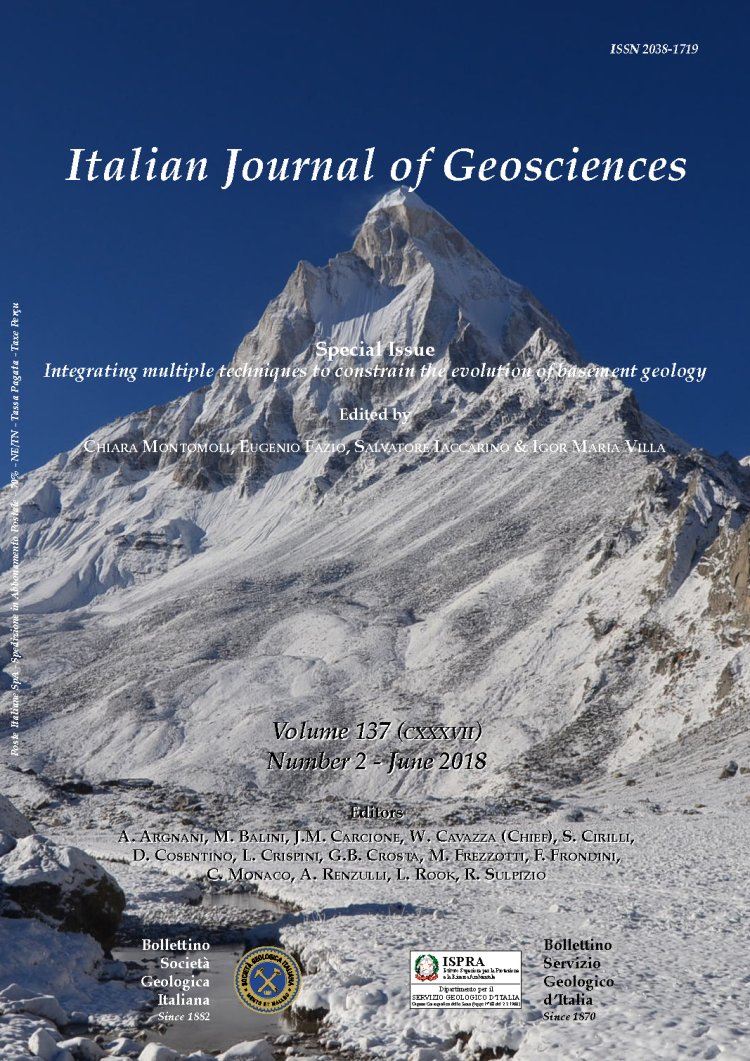
The tectono-magmatic setting of the Hercynian upper continental crust exposed in Calabria (Italy) as revealed by the 1:10,000 structural-geological map of the Levadio stream area
Vincenzo Festa (1), Fabrizio Tursi (1), Alfredo Caggianelli (1) & Richard Spiess (2)
(1) Dipartimento di Scienze della Terra e Geoambientali, Università degli Studi di Bari “Aldo Moro”, Via E. Orabona, 4, 70125 Bari, Italy.
(2) Dipartimento di Geoscienze, Università degli Studi di Padova, Via G. Gradenigo, 6 - 35131 Padova, Italy.
Corresponding author email: vincenzo.festa@uniba.it.
Volume: 137 (2018) f.2
Pages: 165-174
Abstract
This study presents a structural-geological map illustrating the tectonic contact between the Stilo-Pazzano Phyllite Unit and the Mammola Paragneiss Unit. Their juxaposition is exposed in the Paleozoic upper continental crust cropping out in the southern Serre Massif. Since the geometry of the contact has never been defined before, a detailed geological survey has been carried out in the Levadio stream area, i.e. one of the most promising areas to constrain the tectono-magmatic setting of the Hercynian upper continental crust exposed in Calabria. A structural-geological map, at a scale 1:10,000, has been constructed, including also Upper Carboniferous
granodiorites, belonging to the Serre batholith, and Lower Permian felsic dykes, both useful time markers to constrain the minimum age for the juxtaposition of the Stilo-Pazzano Phyllite and Mammola Paragneiss units wall rocks. According to petrographic and structural observations, the attempt to discriminate on the geological map the main deformation events has been made also by the use of tracing distinct fold-axial-planes, each referring to the related contractional deformation event. This approach makes the geological map intuitive for the relative timing of the deformational events affecting the Stilo-Pazzano Phyllite and Mammola Paragneiss units. The geological mapping of the Levadio stream area shows that the post-Visean – pre-Upper Carboniferous tectonics was characterized by a main extensional event, that was responsible for the juxtaposition of the Mammola Paragneiss Unit (below) and the Stilo-Pazzano Phyllite Unit (above) under greenschist facies conditions. Three subsequent, progressively weaker contractional deformation events occurred in response to the late Hercynian emplacement and incremental growth of the Serre batholith.
Keywords
Get Full Text Attached